南大青叶及其混伪品生药学研究
张先达,陈奕龙,张丹雁
(1.深圳市宝安区中心医院,广东深圳518102;2.广州中医药大学中药学院,广东广州510006)
南大青叶及其混伪品生药学研究
张先达1,陈奕龙2,张丹雁2
(1.深圳市宝安区中心医院,广东深圳518102;2.广州中医药大学中药学院,广东广州510006)
【目的】对市售南大青叶及其常见混伪品进行鉴别,为南大青叶药材及其中药制剂质量控制提供参考。【方法】采集南大青叶药材(野生及栽培品)及其混伪品球花马蓝叶、广西马蓝叶、路边青叶,采用性状、半显微、显微鉴定方法对其进行鉴别。【结果】南大青叶正品与混伪品在性状鉴别上的差异,主要在于叶形、叶片和叶柄的长度、叶肉颜色、叶尖端、叶缘、上下表面覆盖物及气味等;在半显微鉴别上的区别,主要在于叶柄、主脉、侧脉和叶肉上的毛茸特点及叶肉上是否能看到钟乳体等;而显微鉴别特征主要在于上下表皮细胞形状、气孔轴式、腺鳞、非腺毛及结晶的类型等。【结论】性状鉴定、半显微鉴定及显微鉴定法相结合可准确鉴别、区分南大青叶及其混伪品,为南大青叶的鉴别提供理论依据。
南大青叶;马蓝;球花马蓝;广西马蓝;路边青;鉴别
南大青叶来源于爵床科植物马蓝Baphicacanthus cusia(Nees)Bremek.的干燥叶及幼嫩茎,苦、咸、大寒,具有清热解毒、凉血定惊等功效[1],主要分布于我国华南、西南和华东等地区[2],为抗病毒常用中草药[3],具有悠久的临床药用历史,但尚未列入地方及国家药品标准[4]。由于马蓝野生资源不足,栽培产量难以满足市场需求,市售南大青叶多为同科混伪品(球花马蓝叶、广西马蓝叶等),部分地区则将马鞭草科路边青的叶当南大青叶药用。目前,已有文献探讨了南大青叶与球花马蓝叶、蓼蓝叶、路边青叶等的鉴别特征[5-9],但所做表述较为简略、片面。因此,本研究在本课题组前期研究[10]的基础上,结合《中国药典》要求,分别从性状鉴定、显微鉴定及理化鉴定等方面对南大青叶与混伪品的生物学特征进行系统的描述说明,现报道如下。
1 材料
1.1 药材栽培南大青叶采自福建仙游和广东围垦,野生南大青叶采自广东从化和广东河源,混伪品球花马蓝叶、广西马蓝叶及路边青叶采自贵州、广西、广东等地,以上样品均经广州中医药大学中药鉴定教研室张丹雁教授鉴定,分别为爵床科马蓝Baphicacanthus cusia(Nees)Bremek.的干燥叶及幼嫩茎,球花马蓝Strobilanthes Pentstemonoides(Nees) T.Ander、广西马蓝Strobilanthes guangxiensis S.Z. Huang及马鞭草科路边青Clerodendrum cyrtophyllum Turcz.的干燥叶。
1.2 仪器游标卡尺(三圈牌,上海),X5Z-H COIC三目显微镜(重庆奥特光学仪器有限责任公司),TP510电子目镜及SMZ-T4连续变倍体视显微镜(重庆奥特光学仪器有限责任公司)。
2 方法与结果
2.1 性状鉴别采用传统经验鉴别方法分别对南大青叶正品及混伪品的叶片形状、颜色、叶缘、表面覆盖物等外观特征进行观察比较,并测量叶片长度、宽度,结果见表1。
2.2 半显微鉴别采用体视镜观察南大青叶正品及混伪品的叶片上下表面覆盖物、叶脉毛茸密集程度、叶脉及腺点等,结果见表2及图1~10。
2.3 显微鉴别
2.3.1 整体透化装片及粉末透化装片采用显微镜观察叶片的整体透化装片以及粉末透化装片,观察其上下表面特征,包括上下表皮细胞形态、气孔轴式、腺鳞及非腺毛形态、导管类型、结晶类型及形状等。在光学显微镜下观察2种叶片装片的显微特征并拍照,采用显微图像分析系统测量,并比较各样品数据,结果见表3及图11~16。
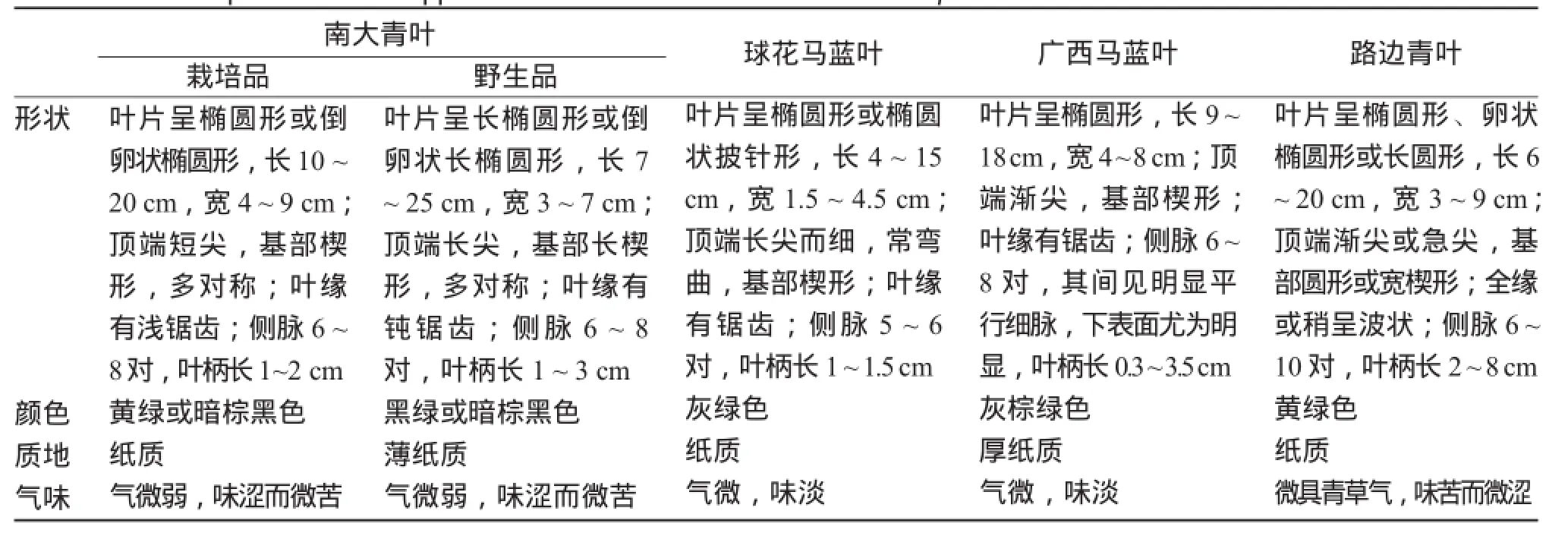
表1 南大青叶正品与混伪品药材性状比较Table 1Comparison of the appearance characters of the leaves of Baphicacanthus cusia and the mixed adulterants

表2 南大青叶正品与混伪品体视镜特征比较Table 2Comparison of the semi-microscopic characters of the leaves of Baphicacanthus cusia and the mixed adulterants detected by stereoscope

图1 栽培品南大青叶(正面)体视镜特征表现(×20)Figure 1Stereoscopic features of obverse side of leafves of cultivated Baphicacanthus cusia(×20)

图2 栽培品南大青叶(背面)体视镜特征表现(×20)Figure 2Stereoscopic features of reverse side of leaves of cultivated Baphicacanthus cusia(×20)

图3 野生品南大青叶(正面)体视镜特征表现(×20)Figure 3Stereoscopic features of obverse side of leaves of wild Baphicacanthus cusia(×20)

图4 野生品南大青叶(背面)体视镜特征表现(×20)Figure 4Stereoscopic features of reverse side of leaves of wild Baphicacanthus cusia(×20)

图5 球花马蓝叶(正面)体视镜特征表现(×20)Figure 5Stereoscopic features of obverse side of leaves of Qiuhuamalan(×20)

图6 球花马蓝叶(背面)体视镜特征表现(×20)Figure 6Stereoscopic features of reverse side of leaves of Qiuhuamalan(×20)

图7 广西马蓝叶(正面)体视镜特征表现(×20)Figure 7Stereoscopic features of obverse side of leaves of Guangxi Malan(×20)

图8 广西马蓝叶(背面)体视镜特征表现(×20)Figure 8Stereoscopic features of reverse side of leaves of Guangxi Malan(×20)

图9 路边青叶(正面)体视镜特征表现(×20)Figure 9Stereoscopic features of obverse side of leaves of Lubianqing(×20)

图10 路边青叶(背面)体视镜特征表现(×20)Figure 10Stereoscopic features of reverse side of leaves of Lubianqing(×20)

图11 南大青叶与混伪品气孔轴式(×40)Figure 11Comparison of shaft-type stomata of Baphicacanthus cusia and its mixed adulterants(×40)
2.3.2栽培品与野生品南大青叶组织特征比较分别将新鲜南大青叶及嫩茎于流水下洗净,选取完整的叶片及嫩茎,固定于FAA固定液中;以常规石蜡法制片,切片厚度为15~20 μm;以苯胺蓝染色,中性树胶封片,在光学显微镜下观察显微特征并拍照;利用显微图像分析系统测量,比较数据,栽培品与野生品南大青叶组织特征比较结果见表4及图17~21,栽培品与野生品马蓝嫩茎组织特征比较结果见表5及图22~25。

图12 南大青叶与混伪品腺鳞比较(×40)Figure 12 Comparison of adeno-squamous hair of leaves of Baphicacanthus cusia and its mixed adulterants(×40)

图13 南大青叶与混伪品非腺毛比较(×40)Figure 13Comparison of non-glandular hairs of leaves of Baphicacanthus cusia and its mixed adulterants(×40)

图14 南大青叶与混伪品钟乳体比较(×40)Figure 14Comparison of cystoliths of Baphicacanthus curia and its mixed adulterants(×40)
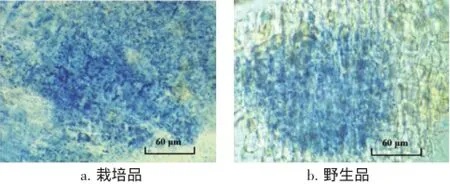
图15 南大青叶靛蓝结晶(×40)Figure 15Indigo-blue crystallization in the leaves of Baphicacanthus cusia(×40)
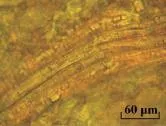
图16 路边青叶晶鞘纤维(×40)Figure 16Crystal fibers in leaves of Lubianqing(×40)

表4 栽培品与野生品南大青叶组织特征比较Table 4Comparison of the histological features of the leaves of cultured and wild Baphicacanthus cusia samples
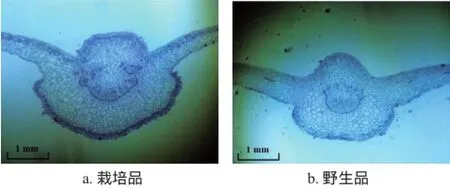
图17 南大青叶横切面显微特征(×4)Figure 17Microscopic features of cross section of Baphicacanthus cusia leaves(×4)

图18 南大青叶上表皮及栅栏组织(×40)Figure 18Upper epidermis and palisade tissues of Baphicacanthus cusia leaves(×40)

图19 南大青叶下表皮及腺鳞(×40)Figure 19Lower epidermis and glandular tissues of Baphicacanthus cusia leaves(×40)
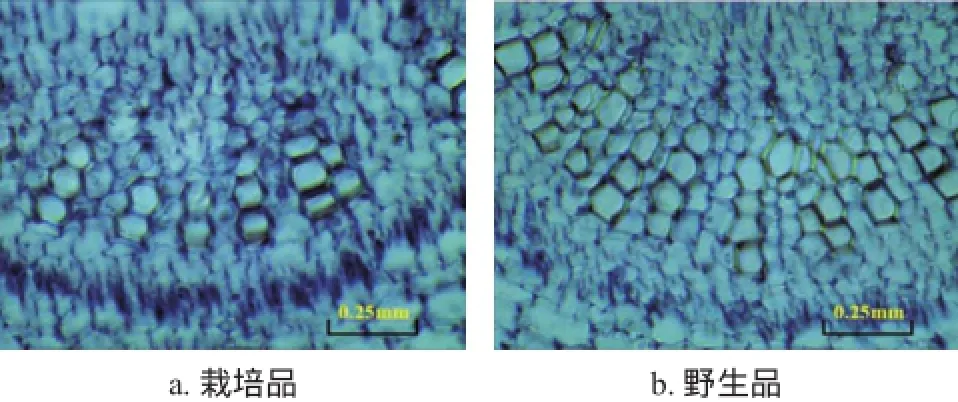
图20 南大青叶木质部及韧皮部(×10)Figure 20Xylem and phloem of Baphicacanthus cusia leaves(×10)

图21 南大青叶钟乳体(×40)Figure 21 Cystoliths of Baphicacanthus cusia leaves(×40)

图22 马蓝嫩茎横切面显微特征(×4)Figure 22Microscopic features of cross section of tender stems of Baphicacanthus cusia(×4)
3 讨论
南大青叶药材栽培品与野生品性状极为相似,须泡水展开后观察其叶形、叶宽、叶先端、叶基部、厚薄及长宽比等并进行鉴别。南大青叶正品与混伪品在性状鉴别上差异主要在于叶形、叶片和叶柄的长度、叶肉颜色、叶尖端、叶缘、上下表面覆盖物及气味等;在半显微鉴别上区别主要在于叶柄、主脉、侧脉和叶肉上的毛茸特点及叶肉上是否能看到钟乳体等;而显微鉴别特征主要在于上下表皮细胞形状,气孔轴式、腺鳞、非腺毛及结晶的类型等。
栽培品马蓝为大田种植,荫蔽度低,光照强,蒸腾作用强,而野生品多生于山坡、草丛及林边等较荫蔽潮湿的地方,荫蔽度高,蒸腾作用较栽培品弱[11]。因此,从叶形上看,栽培的南大青叶叶片较宽而厚,而野生的南大青叶为获得光照而不断伸展,使得叶片长而薄。另外,从显微结构看,栽培品由于光照和肥水充足,代谢旺盛,叶及嫩茎组织结构中木化程度高,木质部及韧皮部明显较野生品宽,细胞排列较疏松,毛茸及次生产物靛蓝、钟乳体数量亦明显较野生品多。南大青叶栽培品与野生品之间的差异反映了药材性状及组织结构与生长环境密切相关。

表5 栽培品与野生品马蓝嫩茎组织特征比较Table 5Histological features of the tender stems of the cultured and wild Baphicacanthus cusia
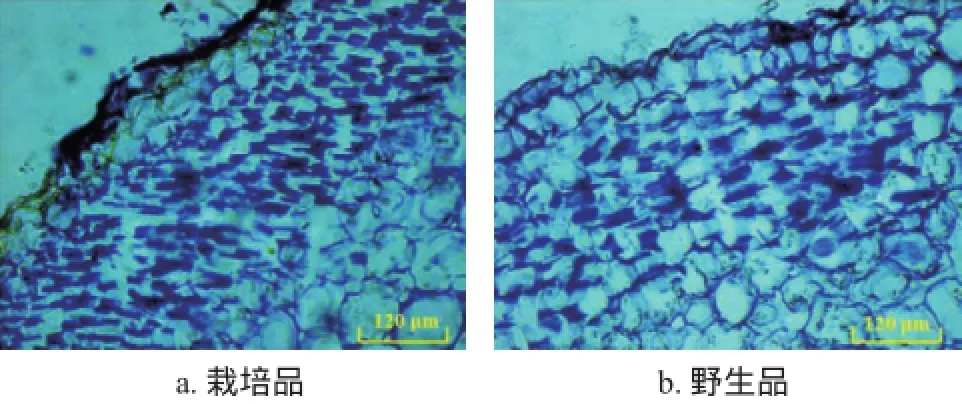
图23 马蓝嫩茎皮层及厚角组织(×20)Figure 23Cortex and collenchyma of tender stems of Baphicacanthus cusia(×20)
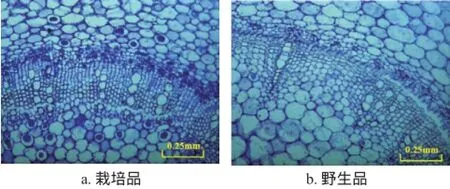
图24 马蓝嫩茎木射线及导管(×10)Figure 24Wood ray and vessel of tender stems of Baphicacanthus cusia(×10)
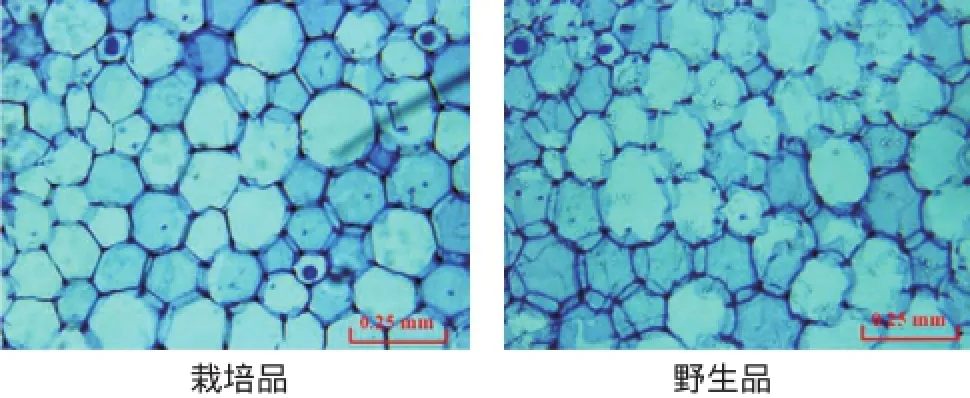
图25 马蓝嫩茎髓部(×10)Figure 25Centrum of tender stems of Baphicacanthus cusia(×10)
[1]杨秀贤,吕曙华,吴寿金.马蓝叶化学成分的研究[J].中草药,1995,26(12):622.
[2]张丹雁,林秀旎,陈晓庆,等.南板蓝(马蓝)驯育栽培技术研究[J].现代中药研究与实践,2010(2):18.
[3]侯惠婵,梁少珍.HPLC法测定马蓝根、茎、叶中靛玉红、靛蓝的含量[J].中药材,2006,29(7):681.
[4]陈晓庆.南板蓝(马蓝)栽培的关键技术研究[D].广州:广州中医药大学,2011.
[5]黄燮才,杨芬,韦家福.中药马蓝叶及其混乱品的比较鉴别[J].广西植物,1988,8(3):239.
[6]覃继佳,何报作.马蓝叶与混淆品路边青叶的脉末梢显微鉴别特征[J].广西中医药,2011,34(6):55.
[7]刘慧.3种市售大青叶的鉴别比较[J].海峡药学,2012,24(9):34.
[8]王永艳,孔增科.大青叶、蓼大青叶的鉴别与合理用药[J].河北中医,2008,30(7):760.
[9]何报作,覃继佳,朱意麟,等.马蓝叶与其易淆品路边青叶的叶形态—脉序图谱的鉴别特征[J].中药材,2012,35(3):385.
[10]刘家水,张丹雁,陈奕龙,等.栽培与野生马蓝叶及花粉粒的扫描电镜特征比较[J].广东农业科学,2012,39(24):12.
[11]张丹雁,林秀旎,陈晓庆,等.南板蓝(马蓝)驯育栽培技术研究[J].现代中药研究与实践,2010(2):18.
【责任编辑:黄玲,侯丽颖】
Pharmacognostical Studies of Leaves of Baphicacanthus cusia(Nees)Bremek. and Its Adulterants
ZHANG Xianda1,CHEN Yilong2,ZHANG Danyan2
(1.Central Hospital ofBao’an District,Shenzhen 518102 Guangdong,China;2.College ofChinese Herbal Medicine,Guangzhou UniversityofChinese Medicine,Guangzhou 510006 Guangdong,China)
Abstract:ObjectiveTo identify the leaves of Baphicacanthus cusia(Nees)Bremek.from its commonly-seen adulterants in China markets,so as to provide a reference for the quality control of Baphicacanthus cusia and its preparations.MethodsThe leaves of Baphicacanthus cusia(wild or cultivated samples)and its adulterants of Strobilanthes Pentstemonoides(Nees)T.Ander(Qiuhuamalan),Strobilanthes guangxiensis S.Z.Huang(Guangxi Malan),and Clerodendrum cyrtophyllum Turcz.(Lubianqing)were collected for the identification of their macroscopic,semi-microscopic and microscopic characteristics.ResultsGreat differences of appearance characters were shown in the leaves of Baphicacanthus curia and the mixed adulterants,and the differences were mainly present in leaf shape,leaf and petiole length,leaf color,leaf apex,leaf edge,leaf surface coverings and leaf smell.The main differences of the semi-microscopic features lied in the petioles,midrib and lateral veins,fluffy characteristics of the mesophyll,and the presence of cystoliths on the mesophyll.The differences of the microscopic characteristics mainly lied in the upper and lower epidermal cell shape,shaft type stomata,adenosquamous and non-glandular hairs and crystallization types.ConclusionThe combination of the macroscopic identification,semi-micro scopic and microscopic identification methods can be used for the exact identification of leaves of Baphicacanthus cusia and its adulterants,which will provide the theory basis for the identification of leaves of Baphicacanthus cusia.
leaves of Baphicacanthus cusia(Nees)Bremek.;Baphicacanthus cusia(Nees)Bremek;Strobilanthes Pentstemonoides(Nees)T.Ander(Qiuhuamalan);Strobilanthes guangxiensis S.Z.Huang(Guangxi Malan);Clerodendrum cyrtophyllum Turcz.(Lubianqing);identification
R286.0
A
1007-3213(2016)06-0860-08
10.13359/j.cnki.gzxbtcm.2016.06.024
2016-05-17
张先达(1975-),男,主管药师;E-mail:71203955@qq.com
张丹雁(1964-),女,教授,博士研究生导师;E-mail:danyan64@163.com
广东省科技计划项目(编号:2010B030700067)

